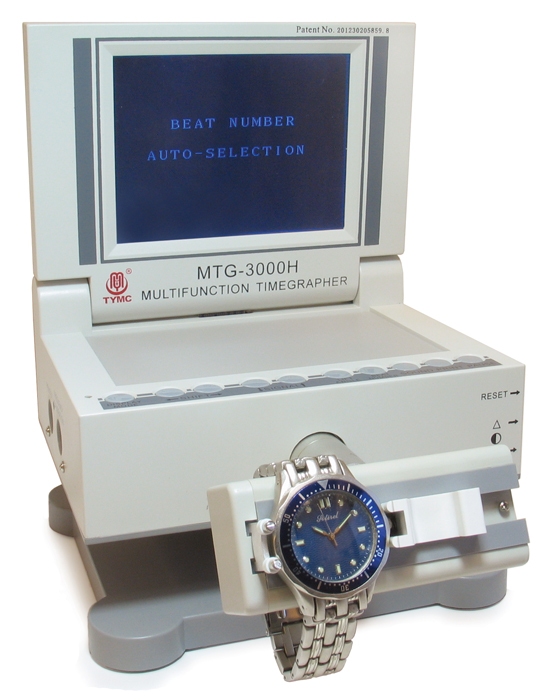
 |
ROLEXROLEXROLEXROLEXROLEXROLEX
 ROLEXROLEXROLEXROLEXROLEXROLEX
ROLEXROLEXROLEXROLEXROLEXROLEX
|
|
#1 |
|
"TRF" Member
Join Date: Mar 2008
Real Name: Mark
Location: Los Angeles
Watch: 5513
Posts: 2,192
|
"Regulating A Watch": What Exactly Are We Talking About?
Does anyone know _exactly_ what RSC does when they "regulate" a watch? Take the back off and adjust the +/- speed of the watch according to GMT?
Thanks. Sorry if this has been posted elsewhere. |
|
|

|
|
|
#2 |
|
"TRF" Member
Join Date: Dec 2007
Location: New Jersey
Posts: 68
|
Regulating Rolex
All modern Rolexes have a free-sprung balance (perhaps with the exception of the Cellini line.) This means that regulation is not by the more common method of adjusting the effective balance spring length with curb pins mounted on a regulator arm, but by adjusting the weights mounted in the plane of the balance itself. This method can provide much finer regulation, and was in fact used by marine chronometers before use in watches. By the way, Rolex began the use of this method first on a limited basis on the KEW observatory speedkings of the 1940's, and then in regular production on 1065 and 1066 models in the 1950's. The last oyster model to use the old method of regulation would be the no date 5513 submariner of 1989 or 1990.
|
|
|

|
|
|
#3 |
|
"TRF" Member
Join Date: Sep 2007
Real Name: Lee
Location: Malaysia
Watch: 16750
Posts: 2,534
|
In addition to the above:
Regulating a watch is to ensure a consistent running rate in several positions so that there is an acceptable series of rate results for a particular movement. To do this, the watch is timed in several positions, and adjusted for those positions, meaning dial up, crown left crown right, crown down etc. The number of positions for rolex is 5. |
|
|

|
|
|
#4 |
|
2024 Pledge Member
Join Date: Nov 2005
Location: Member 202♛
Posts: 1,814
|
__________________

|
|
|

|
|
|
#5 |
|
"TRF" Member
Join Date: May 2005
Real Name: Sir
Location: Melbourne
Watch: F-series SD
Posts: 8,589
|
I might be wrong, but I think Mark's asking something entirely different. We're not talking about the overall servicing procedure but simply the measure by which regulation is carried out.
Yes, they take the caseback off and adjust the +/-. However, instead of measuring the accuracy against GMT or some other slower measure of time, they time the speed of the escapement (effectively the pendulum of your watch) using a timing machine:  The machine uses an electronic pickup (similar to a microphone) to measure the rate at which the escapement oscillates by the vibrations that it produces. By measuring this frequency, the machine extrapolates how fast or slow the movement will be in a 24-hour period. For example, if a 28000 bph movement (you can set the machine according to the ideal speed of the movement) is running at 28010 bph, the machine will calculate that it is running fast by about 31 seconds a day. Instead of waiting for 24 hours to see how fast the movement will run, you get your figures in real-time, so that you can make your adjustments quickly and precisely. I hope that I've understood the question right and given the most concise answer.
__________________
You buy a Casio to make sure you're on time; you wear a Rolex because you don't have to be on time. |
|
|

|
|
|
#6 |
|
Banned
Join Date: Mar 2008
Real Name: Michael
Location: LaLa Land
Watch: Sub Date 16610
Posts: 1,757
|
Very interesting guys. Tx all.... :-)
|
|
|

|
|
|
#7 |
|
"TRF" Member
Join Date: Mar 2008
Real Name: Mark
Location: Los Angeles
Watch: 5513
Posts: 2,192
|
This is all extremely informative and edifying.
Thank you one and all! |
|
|

|
 |
| Currently Active Users Viewing This Thread: 1 (0 members and 1 guests) | |
|
|
*Banners
Of The Month*
This space is provided to horological resources.